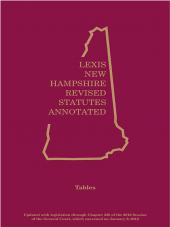Legal Usage: A Modern Style Guide
Select a format
 International Order Inquiry
International Order Inquiry
Select subscription type
Terms & conditions
Subscribers receive the product(s) listed on the Order Form and any Updates made available during the annual subscription period. Shipping and handling fees are not included in the annual price.
Subscribers are advised of the number of Updates that were made to the particular publication the prior year. The number of Updates may vary due to developments in the law and other publishing issues, but subscribers may use this as a rough estimate of future shipments. Subscribers may call Customer Support at 800-833-9844 for additional information.
Subscribers may cancel this subscription by: calling Customer Support at 800-833-9844; emailing customer.support@lexisnexis.com; or returning the invoice marked "CANCEL".
If subscribers cancel within 30 days after the product is ordered or received and return the product at their expense, then they will receive a full credit of the price for the annual subscription.
If subscribers cancel between 31 and 60 days after the invoice date and return the product at their expense, then they will receive a 5/6th credit of the price for the annual subscription. No credit will be given for cancellations more than 60 days after the invoice date. To receive any credit, subscriber must return all product(s) shipped during the year at their expense within the applicable cancellation period listed above.
The total price includes the product(s) listed in the Order Form and any Updates for a limited period (minimum period of 30 days) after the order is placed ("Order Window"). Shipping and handling fees are not included in the grand total price.
All shipments may be returned, at subscribers' expense, for full credit of the Price within 30 days of receipt.
Shipments may not be returned, and no credits will be issued, more than 30 days after receipt.
After the Order Window, subscribers will receive notice of Updates along with the then-current grand total price and order process as Updates become available. Subscribers will only be shipped those Updates they specifically request.
Product description
Style guides for legal writing are rare — this book fills that gap. It explores all aspects of legal usage. The purpose is to encourage a modern legal style that is clear, concise, elegant, reader-friendly and legally effective.
The book is organised alphabetically by word, phrase and subject matter, with extensive cross-referencing to related topics. The author cites hundreds of usage examples from leading judges in common law jurisdictions. He offers simple plain-language alternatives for numerous technical terms and foreign-language phrases, with supporting examples from judgments and legal texts.
This innovative and authoritative guide is an essential reference for lawyers, legislative drafters, decision-makers, students, in-house counsel, and anyone charged with preparing effective legal material.
Topics include:
• organising material logically
• adding impact to sentences
• writing in ways that are gender-neutral and idiomatic
• minimising ambiguity
• using provisos and recitals
• breaking complex material into digestible chunks
• paragraphing effectively
• punctuating properly
• managing definitions
• handling principles of interpretation
• eliminating prolixity
• creating effective headings
• using (or avoiding) terms of art and Latin phrases
• avoiding ‘fussy’ drafting
• creating effective layout and design
• using graphs, diagrams, notes and examples
• avoiding noun-strings and passives
• testing documents for readability
• understanding readability formulas
• using humour in legal writing.
eBooks, CDs, downloadable content, and software purchases are noncancelable, nonrefundable and nonreturnable. Click here for more information about LexisNexis eBooks. The eBook versions of this title may feature links to Lexis+® for further legal research options. A valid subscription to Lexis+® is required to access this content.
Table of contents
• organising material logically
• adding impact to sentences
• writing in ways that are gender-neutral and idiomatic
• minimising ambiguity
• using provisos and recitals
• breaking complex material into digestible chunks
• paragraphing effectively
• punctuating properly
• managing definitions
• handling principles of interpretation
• eliminating prolixity
• creating effective headings
• using (or avoiding) terms of art and Latin phrases
• avoiding ‘fussy’ drafting
• creating effective layout and design
• using graphs, diagrams, notes and examples
• avoiding noun-strings and passives
• testing documents for readability
• understanding readability formulas
• using humour in legal writing.
 Lexis Nexis
Lexis Nexis 


